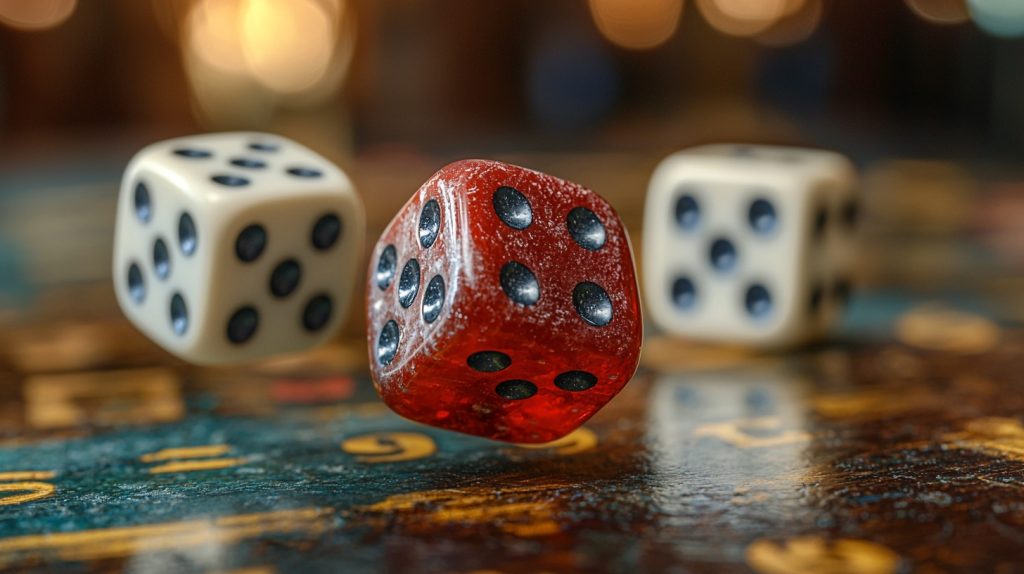Throughout history, people have found ways to entertain themselves, with gambling being one of the oldest forms of enjoyment. Now, it’s evolved into modern platforms like Royal Reels 18 – https://pokiesnearme.net/royal-reels. Though often seen as a modern pastime, gambling dates back thousands of years, with evidence as early as 3000 BC. How do we know this? The discovery of bone dice suggests ancient games, some similar to todays. In this article, we’ll explore the history of dice, their evolution, and the development of iconic dice-based games.
The ancient world
The earliest dice date back to 3000 BCE and were discovered in ancient Mesopotamia and Egypt. Typically crafted from animal bones, wood, or stone, and occasionally ivory, these dice often featured six sides, decorated with symbols relevant to their cultures.
One of the first known dice games, the Royal Game of Ur, originated in Mesopotamia. Named after the city of Ur, this two-player game is considered the precursor to modern backgammon. The objective was simple: to remove all one’s pieces from the board before the opponent could. Its gameplay bears similarities to backgammon and even checkers.
In Ancient Egypt, a game called Senet was widely popular, especially among the elite. It endured for millennia and was later adopted by the Romans. However, during the Roman era, the game’s popularity waned, and its original rules were lost. Today, historians are still attempting to piece together how the game was played to better understand the Egyptian mindset.
The medieval period and renaissance
During the Middle Ages, dice games became more accessible, spreading from royalty to the working class. One notable game from this time was Hazard, a precursor to the modern dice game craps. Though cards were introduced to Europe by Iberian merchants trading with North Africa, dice games remained a dominant form of gambling.

The Renaissance brought a new era of intellectual achievement, which extended to gambling. Mathematicians Blaise Pascal and Pierre de Fermat developed probability theory, which revolutionized dice games. This scientific approach led to more sophisticated gameplay and laid the groundwork for the modern casino industry.
The modern period
The Renaissance emphasis on knowledge and innovation spurred the growth of various industries, including gambling. The world’s first casino, the Venice Casino, opened in the 1600s, becoming a hotspot for European nobility. It featured amenities such as a gaming room, cocktail bar, and lodging for guests. Dice games were central to these early casinos, but it wasn’t until the 19th century that games like craps became a staple of casino culture.
Craps, where players bet on the outcome of dice rolls, is now the most recognized casino dice game. However, in its earlier days, it competed with games like Yahtzee, which later transitioned from casinos to family game nights.
Dice games beyond gambling
Yahtzee may have started in the gambling world, but its rise to popularity transformed it into a family classic. Many people today don’t realize its casino origins. Beyond Yahtzee, countless board games incorporate dice, making them a household fixture.
One standout example is Dungeons & Dragons, a tabletop roleplaying game where dice rolls determine the success of player actions. Players create unique characters while a Dungeon Master crafts the world and challenges. Dice are central to the gameplay, influencing battles, spells, and problem-solving.
Another iconic dice-based game is Monopoly, a family favorite for decades. Players roll dice to move around the board, buying and trading property with in-game money. Monopoly, like many board games, demonstrates the enduring appeal of dice as a source of fun and strategy.

